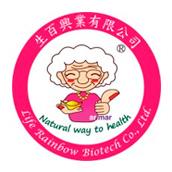Can the rumen protect the dairy from mycotoxins?
Published: August 26, 2010
By: Hilmar Gerhardt
From the toxicological and economical point of view, five mycotoxin groups are currently significant worldwide. These are aflatoxins and ochratoxin A, produced mainly in storage conditions by Aspergillus and Penicillium fungi, and trichothecenes, zearalenone, and fumonisins produced by Fusarium species, contaminating cereals in the fields. Depending on dosage and exposition time to mycotoxins, animals' intoxication may be acute, caused by high doses of mycotoxins intake or chronic, resulting from long term low dose of mycotoxin intake (12). Adult ruminants show a high ability to biodegrade mycotoxins, because bacteria and protozoa settling the rumen neutralise mycotoxins to less toxic compounds in so- called presystemic biodegradation (10).
However, the assumption that rumen flora has unlimited detoxifying abilities is wrong. As studies show, high dosage and/or a high number of different kinds of mycotoxins, limit rumen flora population and as such generate more un non-degraded and still-toxic compounds, which consequently, by passing to further intestinal tract segments, are absorbed in the duodenum and then damage internal organs (5).
Mycotoxicoses, which appear in cattle very often are undiagnosed because of the lack of characteristic clinical signs. Clinical signs of mixed cow mycotoxicosis are variable, not pathognomonic, and are often not identical with the results observed during controlled intoxications with one mycotoxin. On the one hand, it is a result of so-called mycotoxins "conjugation" or "dissembling" (1), and on the other, the result of different kind of interactions between mycotoxins (2).
Rumen flora is the first-line defence against mycotoxins and it takes part in so-called presystemic mycotoxin biodegradation (9), aiming at mycotoxin degradation to less toxic compounds. It is not the case with fumonisins, which pass rumen not being degraded or ZEA, which is degraded to more oestrogenic α- zearalenole. Many mycotoxins showing antibacterial, antiprotozoal, and antifungal properties, modify rumen.
Trichothecenes are a great threat to cattle and they are recognised as gastrointestinal toxins, which produce dangerous mucosal inflammations of the intestinal tract and damage to parenchymatous organs. Pier et al. (7) T-2 toxin and DON, by changing levels of dopamine, tryptophan, and serotonin in the brain cause a decrease or lack in feed intake (8).According to American data collected from over 300 diarydairy cattle herds (about 40,000 cows), DON decreased lactation and increased numbers of somaticcells in milk (4).
However, the assumption that rumen flora has unlimited detoxifying abilities is wrong. As studies show, high dosage and/or a high number of different kinds of mycotoxins, limit rumen flora population and as such generate more un non-degraded and still-toxic compounds, which consequently, by passing to further intestinal tract segments, are absorbed in the duodenum and then damage internal organs (5).
Mycotoxicoses, which appear in cattle very often are undiagnosed because of the lack of characteristic clinical signs. Clinical signs of mixed cow mycotoxicosis are variable, not pathognomonic, and are often not identical with the results observed during controlled intoxications with one mycotoxin. On the one hand, it is a result of so-called mycotoxins "conjugation" or "dissembling" (1), and on the other, the result of different kind of interactions between mycotoxins (2).
Rumen flora is the first-line defence against mycotoxins and it takes part in so-called presystemic mycotoxin biodegradation (9), aiming at mycotoxin degradation to less toxic compounds. It is not the case with fumonisins, which pass rumen not being degraded or ZEA, which is degraded to more oestrogenic α- zearalenole. Many mycotoxins showing antibacterial, antiprotozoal, and antifungal properties, modify rumen.
Trichothecenes are a great threat to cattle and they are recognised as gastrointestinal toxins, which produce dangerous mucosal inflammations of the intestinal tract and damage to parenchymatous organs. Pier et al. (7) T-2 toxin and DON, by changing levels of dopamine, tryptophan, and serotonin in the brain cause a decrease or lack in feed intake (8).According to American data collected from over 300 diarydairy cattle herds (about 40,000 cows), DON decreased lactation and increased numbers of somaticcells in milk (4).
In monogastric animals (6) and in cows, ZEA causes different type of reproductive tract disturbances. Alpha-zearalenole, derivative of ZEA, is responsible for oestrus signs in immature cows, irregular periods in oestrus cycle, silent oestrus, foetus death, abortions,placental retention, and uterus and mammary gland inflammation.Trichothecenes present in feed increaseoestrogenic activity of ZEA. Coppock et al. (3)
By administering ZEA and DON to cows in 660 and 440 μg/kg dosage, apart from lower milk production, showed lowered appetite, diarrhoea, inflammatory lesions in the intestinal tract, and more infections in the reproductive tract.
Mycotoxins are present even in diets well balanced in energy and proteins, leading to productivity and maintenance, are a great threat for cows. Some mycotoxins showing strong antimicrobial action, reduce rumen flora, limiting the efficiency of presystemic mycotoxins elimination. Dairy cattle are more sensitive to mycotoxins than beef cattle. It is connected to high milk production, drying period, parturition, and beginning of lactation, when risk of metabolic diseases is increasing. Released corticosteroids together with immunosuppressive action of mycotoxins decide about cows' increased sensitivity to external infections and opportunistic nfections, which make difficult the diagnosis of mycotoxicosis (11).
In prophylaxis of cows' mycotoxicoses, one should remember that the rumen does not have unlimited detoxifying properties. The Biomin mycotoxin risk management is a natural way to keep the dairy in high yield performance by Biotransformation and naktivation of the mycotoxins.
By administering ZEA and DON to cows in 660 and 440 μg/kg dosage, apart from lower milk production, showed lowered appetite, diarrhoea, inflammatory lesions in the intestinal tract, and more infections in the reproductive tract.
Mycotoxins are present even in diets well balanced in energy and proteins, leading to productivity and maintenance, are a great threat for cows. Some mycotoxins showing strong antimicrobial action, reduce rumen flora, limiting the efficiency of presystemic mycotoxins elimination. Dairy cattle are more sensitive to mycotoxins than beef cattle. It is connected to high milk production, drying period, parturition, and beginning of lactation, when risk of metabolic diseases is increasing. Released corticosteroids together with immunosuppressive action of mycotoxins decide about cows' increased sensitivity to external infections and opportunistic nfections, which make difficult the diagnosis of mycotoxicosis (11).
In prophylaxis of cows' mycotoxicoses, one should remember that the rumen does not have unlimited detoxifying properties. The Biomin mycotoxin risk management is a natural way to keep the dairy in high yield performance by Biotransformation and naktivation of the mycotoxins.
References
1. Binder E.M.: Managing the risk of mycotoxins in modern feed production. Anim Feed Sci Technol 2007, 133, 149- 166.
2. Boermans H.J., Leung M.C.K.: Mycotoxins and the pet food industry: Toxicological evidence and risk assessment. Int J Food Microbiol 2007, 119, 95-102.
3. Coppock R.W., Mostrom M.S., Sparling C.G., Jacobsen B., Ross S.C.: Apparent zearalenone intoxication in a dairy herd from feeding spoiled acid-tread corn. Vet Hum Toxicol 1990, 32, 246-248.
4. Diaz, D.E., Hagler W.M., Hopkins B.A., Patton R.A., Brownie C., Whitlow L.W.: The effect of inclusion of a clay type sequestering agent on milk production of dairy cattle consuming mycotoxin contaminated feeds. J Dairy Sci 2001, 84 (abstr.), 1554.
5. Kiessling K.H., Patterson H., Sandholm K., Olsen M.: Metabolism of aflatoxin, ochratoxin, zearalenone, and three trichothecenes by intact rumen fluid, rumenprotozo and rumen bacteria. Appl Environ Microbiol
1984, 47, 1070-1073.
6. Obremski K., Gajęcka M., Zielonka Ł., Jakimiuk E., Gajęcki M.: Morphology and ultrastructure of small intestine mucosa in gilts with zearalenone mycotoxicosis. Pol J Vet Sci 2005, 8, 301-307.
7. Pier A.C., Richard J.L., Cysewski S.J.: The implication of mycotoxins in animal disease. J Am Vet Med Assoc 1980, 176, 719-722.
8. Prelusky D.B.: The effect of low-level deoxynivalenol on neurotransmitter levels measured in pig cerebral spinal fluid. J Environ Sci Health B 1993, 28, 731-761
9. Schiefer, H.B.: Mycotoxicosis of domestic animals and their diagnosis. Can J Physiol Pharmacol 1990, 68, 987- 990.
10. Schollenberger M., Muller H.M., Fufle M., Suchy S., Plank S., Drochner W.: Natural occurrence of 16 Fusarium toxins in grains and feedstuffs of plant origin from Germany. Mycopathologia 2006, 161, 43-52.
11. Sharma R.P.: Immunotoxicity of mycotoxins. J Dairy Sci 1993, 76, 892-897.
12. Trenholm H.L., Thompson B.K., Hartin K.E., Geenhalgh R., McAllister A.J.: Ingestion of vomitoxin (deoxynivalenol) contaminated wheat by non-lactating cows. J Dairy Sci 1985, 68: 1000.
2. Boermans H.J., Leung M.C.K.: Mycotoxins and the pet food industry: Toxicological evidence and risk assessment. Int J Food Microbiol 2007, 119, 95-102.
3. Coppock R.W., Mostrom M.S., Sparling C.G., Jacobsen B., Ross S.C.: Apparent zearalenone intoxication in a dairy herd from feeding spoiled acid-tread corn. Vet Hum Toxicol 1990, 32, 246-248.
4. Diaz, D.E., Hagler W.M., Hopkins B.A., Patton R.A., Brownie C., Whitlow L.W.: The effect of inclusion of a clay type sequestering agent on milk production of dairy cattle consuming mycotoxin contaminated feeds. J Dairy Sci 2001, 84 (abstr.), 1554.
5. Kiessling K.H., Patterson H., Sandholm K., Olsen M.: Metabolism of aflatoxin, ochratoxin, zearalenone, and three trichothecenes by intact rumen fluid, rumenprotozo and rumen bacteria. Appl Environ Microbiol
1984, 47, 1070-1073.
6. Obremski K., Gajęcka M., Zielonka Ł., Jakimiuk E., Gajęcki M.: Morphology and ultrastructure of small intestine mucosa in gilts with zearalenone mycotoxicosis. Pol J Vet Sci 2005, 8, 301-307.
7. Pier A.C., Richard J.L., Cysewski S.J.: The implication of mycotoxins in animal disease. J Am Vet Med Assoc 1980, 176, 719-722.
8. Prelusky D.B.: The effect of low-level deoxynivalenol on neurotransmitter levels measured in pig cerebral spinal fluid. J Environ Sci Health B 1993, 28, 731-761
9. Schiefer, H.B.: Mycotoxicosis of domestic animals and their diagnosis. Can J Physiol Pharmacol 1990, 68, 987- 990.
10. Schollenberger M., Muller H.M., Fufle M., Suchy S., Plank S., Drochner W.: Natural occurrence of 16 Fusarium toxins in grains and feedstuffs of plant origin from Germany. Mycopathologia 2006, 161, 43-52.
11. Sharma R.P.: Immunotoxicity of mycotoxins. J Dairy Sci 1993, 76, 892-897.
12. Trenholm H.L., Thompson B.K., Hartin K.E., Geenhalgh R., McAllister A.J.: Ingestion of vomitoxin (deoxynivalenol) contaminated wheat by non-lactating cows. J Dairy Sci 1985, 68: 1000.
Related topics:
Authors:
DSM-Firmenich
Recommend
Comment
Share
Intas Pharmaceuticals Ltd.
9 de diciembre de 2010
A good article. Crisp - sure, but needs to be elaborated at least in the differential diagnosis part, for clinicians. Mycotoxins are a major problem in Indian dairy farming. Though clinicians and farm veterinarians are taking up this new problem head-on by trying to acquire more knowledge regarding the same, enough clinical related articles / research have to be taken up.
Recommend
Reply

2 de noviembre de 2010
Good Article
Interesting and awareness creating
Recommend
Reply

26 de septiembre de 2010
Very good article, I understood about micotoxins have damage of the milk quality. I don´t Knew that micotoxins affect to the microorganism of rumen.
Recommend
Reply

20 de septiembre de 2010
ya very simple and self explanatory
Recommend
Reply
Recommend
Reply
26 de agosto de 2010
Very impressive and thought provokoing article. Simple and Crisp.Undergraduate students enjoy the simple explanation and plays a role in their Veterinary Practice
Recommend
Reply

Would you like to discuss another topic? Create a new post to engage with experts in the community.










